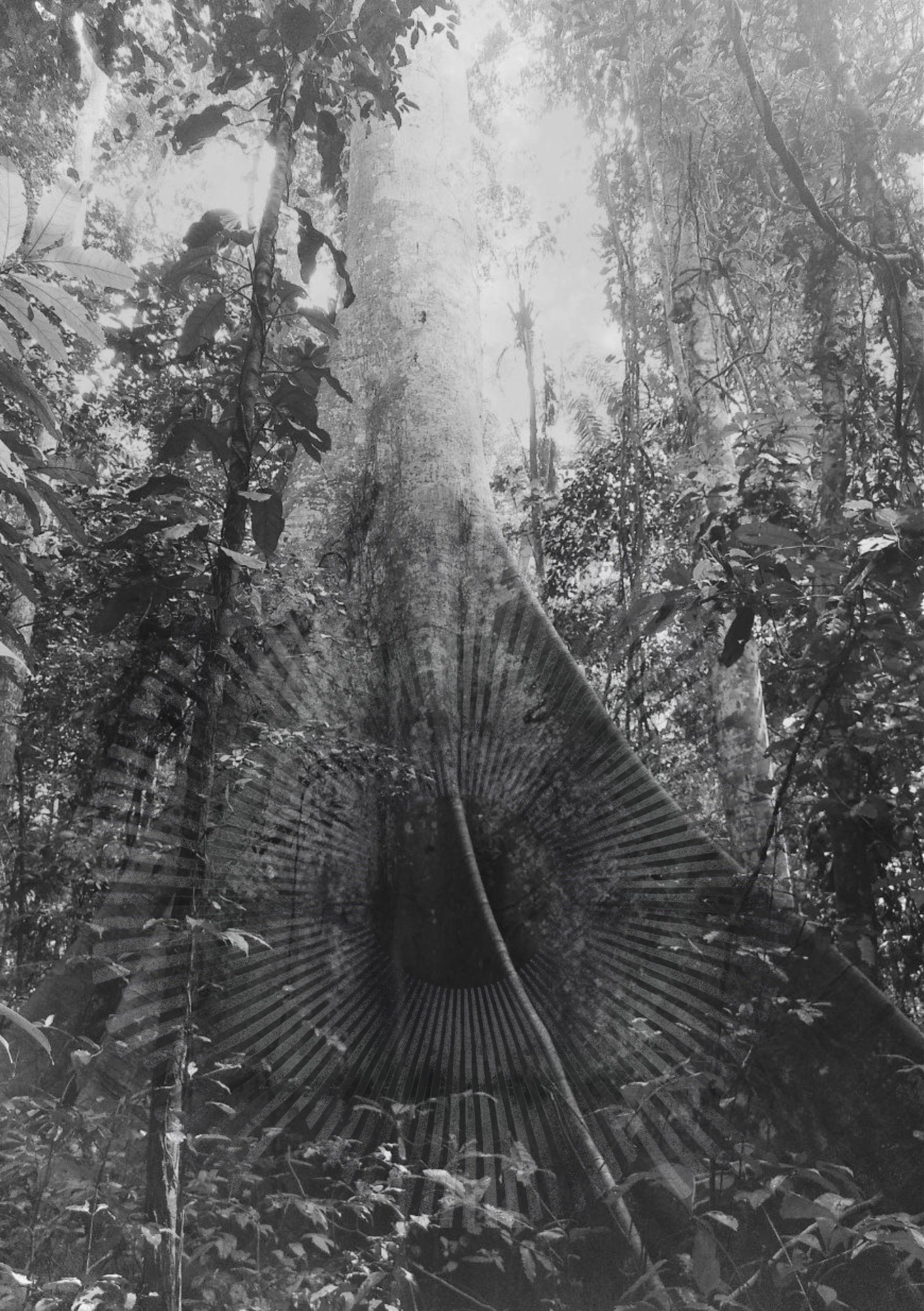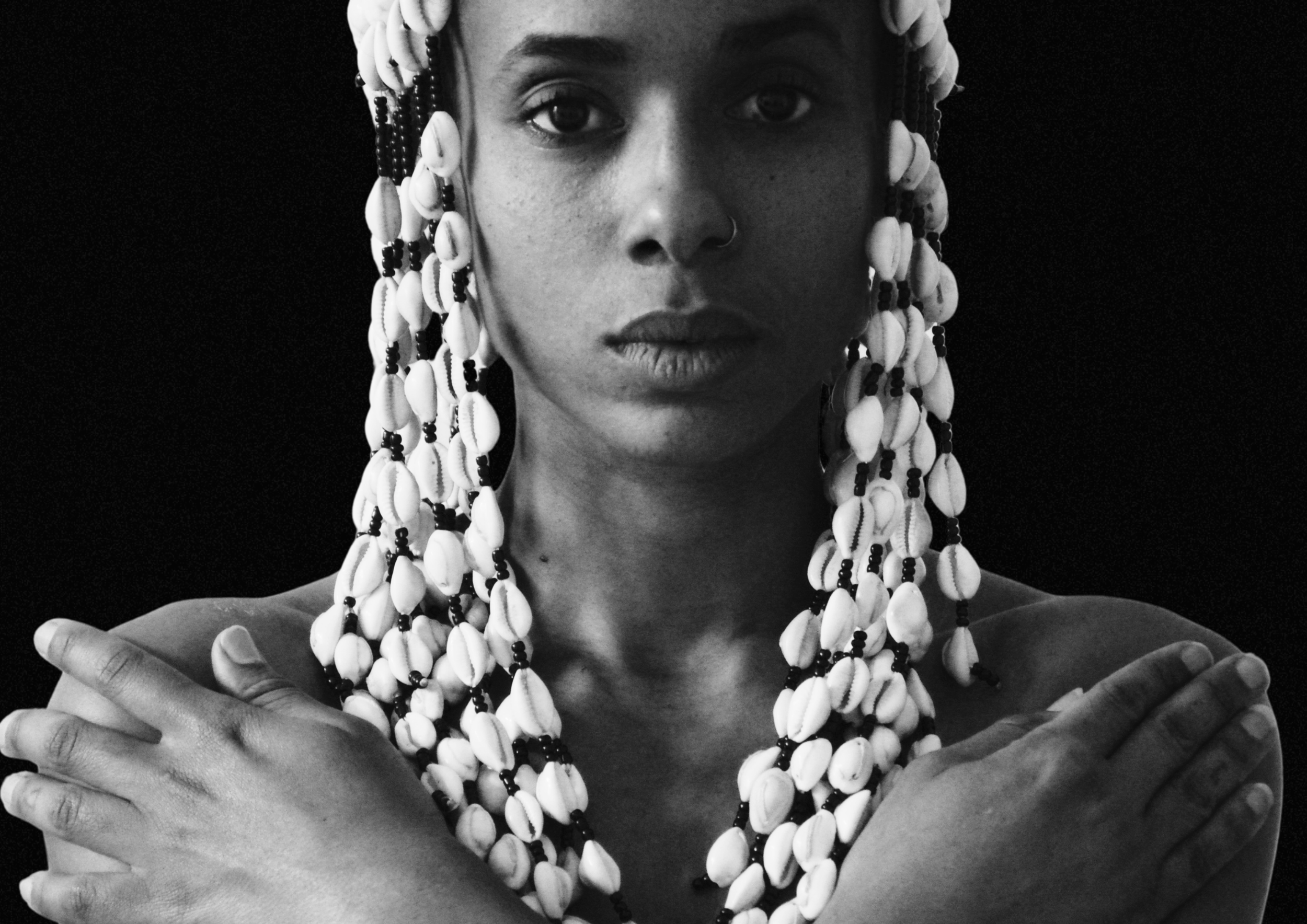PORTFOLIO
VISUAL ARTs Selected works: Photography, Mixed Media
Abolitionist Plant Knowledge
This series is about the connections of abolitionist practices, Black feminism, and ecological knowledge, focusing on the use of plants in liberation movements. Rooted in ancestral systems, the works reflect on decolonial botany and how Black women have historically used plants to resist, assert autonomy and radical self-determination. Through botanical imagery the works honor abolition practices and the reimagining of land not just as a resource, but as a source of ecological sovereignty and resistance. On the last pages, readers find recipes for plant remedies and plant allies in the diaspora.
Artworks were published in 2024/2025 in limited-edition printed Zine (downloaded here ) in collaboration with Spore Initiative
Harriet
Kakum forest, Assin Atandanso.
Photo: A. Asante, 2022
Digital & Printed A5, 2024
-
Reclaiming our relationships with forests & land can help to heal and empower ourselves on various layers.
Kakum Nationalpark, Assin Atandanso
Moist evergreen rainforests harbouring diverse species, habitats and spirits.
Harriet Tubman
Abolitionist, Herbalist
Kauri shells, brass hoops, dried plants, ecological resin & pigments
Digital & Printed A5, 2024
-
Harriet was born around 1820 in the south states (U.S.) on a plantation.
She escaped and risked her life to lead hundreds of other enslaved people to freedom with the Underground Railroad. Harriet had a strong connection with nature. She used knowledge of the stars, local landscapes, and plants to escape. Her herbal knowledge was wide ranging, she used plants like poppy to calm babies on the journey and she soothed wounds of people with geranium.
Further resources: Freedom network Harriet Tubman. https://harriettubmanbyway.org/harriet-tubman/
Kakum

African-futuristic ecologies
The photographic moving collages reimagine Black abundant futures and lush natural worlds. The works confront the status quo of extractive gold mining (Galamsey) in Ghana and genocidal Coltan, Cobalt and Diamond mining in the DRC. Bringing up questions of how to reclaim resources and reparations? Imagining how resources can be utilized by and for the people, reframing technologies as tools for transformation and abolitionism.
Leafs and masks photographed in 2024 in Bahia, Brazil in reference to the connection with the Black diaspora. Looped and not AI generated.
Exhibited at Dortmund Goes Black, Theather Dortmund in April 2025 and at Spore Initiative during the Berlin reparations conference in February March 2025
Asante Kotoko
GOLD
Yaka
-
Kakunga masks, crafted in Yaka communities in the Democratic Republic of the Congo, are used for different purposes such as for initiation ceremonies and represent the connection between the physical and spiritual worlds. The masks are supposed to look frightening. Coltan is used for connectivity in electrical devices, in the african futuristic vision these themes go together and create masks with advanced powers.
Nana Yaa Asantewaa
(Archive image Prempeh II)
Anti-colonial Freedom Fighter, Queen Mother
2025, Digital & Printed 61x91 cm
-
Nana Yaa Asantewaa helped to defend the golden stool of the Ashanti empire in Ghana, then callled Gold Coast in 1900. The stool hosts the souls of the ancestors and the souls of the ones yet to come. She and other women called for war against the British colonizers to defend the golden stool. The title of the print is based on her call to war ‘Asante Kotoko’ meaning Asante people bend low and fight. In the background a motherboard with tech gold, as a reference to Galamsey ilegal gold mining. Gold is currently exploited for international use leading to severe ecological & human damage.
Here Nana Yaa Asantewaa appears as a great ancestor, who guides the use of local gold and forests. Spirits that live in the forests are asked for permission before extracting gold. Nana Yaa uses the gold for spiritual and transformative technical purposes.
Coltan
Yaka Mask, DRC
Kakunga
2025, digital & printed 40x50cm

ANcestral Ties
Ancestral Ties is an art project that fuses ritual and bondage. The prints are based on photography and collages, merging traditional elements and contemporary rope practices. The masks were photographed in Bahia, Brazil in early 2024 and connected to the heritage and intentions of the individuals in the images, who were portrayed in Berlin in the end of 2024.
Exhibition dates 28th November 2024 to 16th January 2025 in Berlin Kreuzberg, opening with artist talk 28th November 2024
Baga Nimba
Minq & Moh
Artist & Activist
2024, digital & printed 61x86cm
Ananse
-
Kwaku Ananse, a central figure in West African and Afrodiasporic folktales, embodies the trickster, an agent of wisdom and subversion. Ananse weaves tales of resilience against colonial oppression and societal norms. Through creativity, Ananse transforms adversity into opportunity.
Astan Ka
Artist, singer, actress
2024, digital & printed 61x86 cm
-
The Baga Nimba mask, originates from the Baga people in Guinea and symbolizes agriculture and fertility. In the background, the landscape of Bandiagara, Mali unfolds, with Baobab trees and traditional villages. Connecting Astan to her West African ancestries and motherhood.
Cowrie Close Ups
astan Ka
Astan Ka
Artist, singer, actress
2024
Nana Abena sika
Angel Maxine aka Nana Abena Sika
Singer, activist
2025




